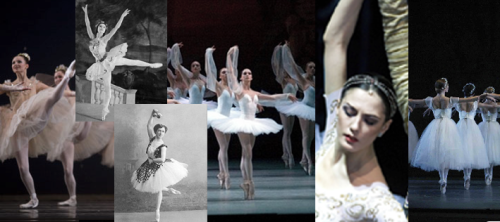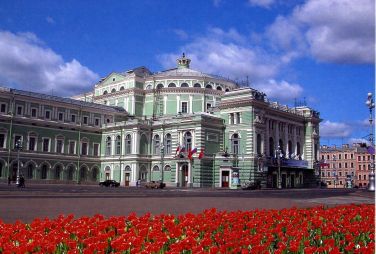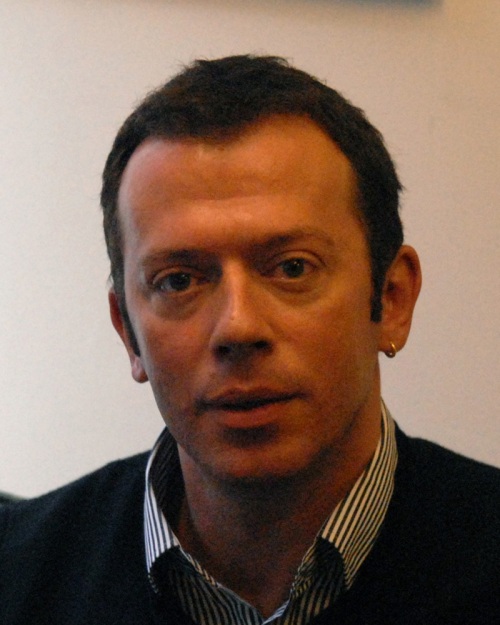
Alexei Ratmansky. Photo: MIRA / ABT ©
As long as there are choreographers like Alexei Ratmansky around our hopes for the future of classical ballet as an art form are renewed. Now one of the world’s most sought-after choreographers, Ratmansky started his career as a ballet dancer with the Kiev Ballet in the Ukraine. Dancing soon took him out of Eastern Europe to various companies in the West where he was exposed to different choreographers and styles. Absorbing all these influences he started developing his own choreographic language, a personal mix of influences by Petipa, Bournonville, Ashton, Balanchine and Tudor woven into narrative or abstract choreography.
His achievements as the Bolshoi’s Artistic Director and a winning streak of new works, including those for New York City Ballet (NYCB), put him center stage. This led to his recent appointment with American Ballet Theatre (ABT) as Artist in Residence, a role tailored so that Ratmansky can create new work for ABT whilst continuing to choreograph worldwide.
While we follow his ABT career with interest and keep crossing our fingers for more of Ratmansky’s work in London, we leave you with some interesting facts & web notes on him.
Alexei Ratmansky in a Nutshell
Alexei Ratmansky was born in St. Petersburg in 1968. He grew up in Kiev, Ukraine where his father – a former gymnast – worked as an aeronautics engineer and his mother as a psychiatrist. At the age of 10 he was accepted into the Bolshoi Academy (Moscow Choreographic Institute) to train under the guidance of Pyotr Pestov and Anna Markeyeva. His classmates included former ABT star and current Berlin Staatsballett Artistic Director Vladimir Malakhov, current Bolshoi director Yuri Burlaka and Bolshoi star Nikolai Tsiskaridze.
From early on Ratmansky showed an interest in experimenting with choreography but despite his talents in performing and in creating dances he was not accepted into the Bolshoi. Instead, he joined the Kiev Ballet as a soloist, dancing leading roles in the classics. During this period he met his soon to be wife, fellow dancer Tatiana Kilivniuk and juggled his dancing career with studying at the Choreographers’ Faculty of GITIS (today, The Russian Academy of Theatre Art – RATI). There he had the opportunity to stage his first ballet, La Sylphide-88. Set to Shostakovich‘s music this was a short work given in one single performance.
In 1992 while on tour in Canada, Ratmansky and his wife were invited to join the Royal Winnipeg Ballet. He continued creating small pieces, mainly for Tatiana, and became familiar with the works of Tudor, van Dantzig, Neumeier and Balanchine.
He quit The Royal Winnipeg Ballet and returned to Kiev in 1995 as a freelance dancer but left again to join The Royal Danish Ballet in 1997. During his seven years in Denmark, Ratmansky immersed himself in August Bournonville’s works. There he continued to create choreography whilst also becoming a principal dancer (2000).
Nina Ananiashvili soon spotted his talent and asked him to create short works for her international tours (the Golden Mask Winner Dreams of Japan, set to taiko drumming and flutes). The touring of these works boosted Ratmansky’s profile and led to his first commissions by the Mariinsky Theatre and the Bolshoi.
In 2002, he staged Cinderella for the Mariinsky and, in 2003, The Bright Stream, for the Bolshoi, as part of their Shostakovich celebrations. The Bright Stream had been originally created in 1935 by Fyodor Lopukhov to Shostakovich’s music but immediately discarded given Stalin‘s disapproval of “peasants on pointe”. Because of this Lopukhov was fired and Shostakovich never wrote a ballet score again. Reinventing the choreography on top of the original libretto, Ratmansky turned this “rejected ballet” into a great success.
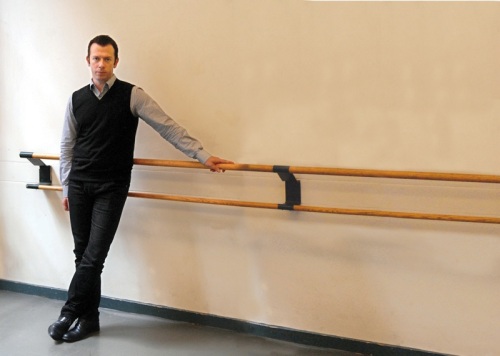
Alexei Ratmansky Photo: MIRA / ABT ©
The Bolshoi Years
Golden Mask Prize winner The Bright Stream led to Ratmansky’s appointment as the Bolshoi’s Artistic Director in 2004. His mandate was to focus on modernising the company and reconciling the new repertoire with the classics.
The Bolshoi’s five years under Ratmansky have been celebrated as a golden age. The company rejuvenated and regained artistic credibility with new works. For Ratmansky it must have been a draining period with a lot of compromising and pacifying different personalities and artistic egos, leaving him with little time and energy to choreograph. He has said in the past that Russia is not very friendly to choreographers given its emphasis on the classics and inherited traditions, with certains dancers limiting themselves to new opportunities and holding on to the belief that they can only be creative within the boundaries of the old repertoire.
During Ratmansky’s tenure 25 new ballets were acquired for the company including works by Balanchine, Roland Petit, Twyla Tharp and Léonide Massine. In addition to The Bright Stream he also successfully restaged lost ballets such as Class Concert, The Flames of Paris and a lavish and critically acclaimed reconstruction of Le Corsaire.
In addition to developing dances Ratmansky is also credited with nurturing and creating opportunitities for such new talents as Natalia Osipova, Ivan Vasiliev, Ekaterina Krysanova, Nelli Kobakhidze and Denis Savin, while also showcasing the artistry of dancers Maria Alexandrova, Ekaterina Shipulina and Svetlana Lunkina, by casting them in new roles.
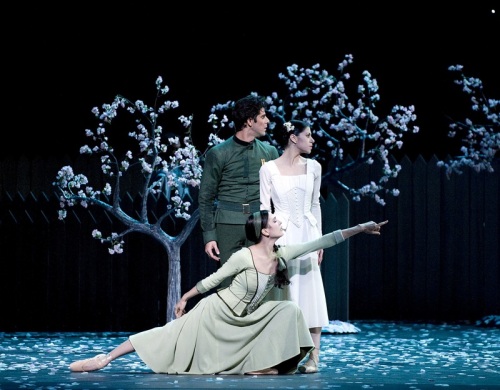
Veronika Part, Marcelo Gomes and Paloma Herrera in Ratmansky's On the Dnieper. Photo: Gene Schiavone / ABT ©
From Bolshoi to ABT
Early in 2008, rumours started circulating of Ratmansky departing to NYCB as resident choreographer, to follow in the steps of Christopher Wheeldon. But the terms of NYCB’s offer would have restricted his ability to create work outside the company so, instead, he decided to join ABT as an Artist in Residence, a role that gives him enough freedom to pursue other collaborations.
Ratmansky’s Ballets
For Ratmansky, classical ballet can be kept alive as long as its human content is relevant, narrative being a particular trait in his works. Ratmansky often mentions that while for George Balanchine, one of his influences, it was all about the steps and abstraction, for him the steps are part of a conversation that blends craft and passion.
His works are considered musical and fluid, probably a direct influence from his experience with Bournonville. He considers his choreography to be instinctive, the product of an analytical reaction to the score and physical response to the music (he used to put on music and film himself to observe how his body reacted naturally). That explains his preference for a more naturalistic port de bras, open chested stands, patterns that are circling, dynamic and constantly shifting, with suggestions of folk dance, as is the case with his Russian Seasons.
Some of Ratmansky’s works
- A Fairy’s Kiss (Tchaikovsky, 1994) – Kiev Ballet
- Capriccio (Stravinsky, 1997) – Bolshoi
- The Charms of Mannerism (Strauss, 1997) – Postmodern-Theatre
- Poem of Ecstasy (Scriabin, 1998) – Mariinsky
- Middle Duet (Hanin, 1998) – Mariinsky
- Turandot’s Dream (Hindemith, 2000) – The Royal Danish Ballet
- Bolero (Ravel, 2001) – International Ballet of Copenhagen
- Flight to Budapest (Brahms, 2001) – International Ballet of Copenhagen
- Nutcracker – Re-staging after Petipa (Tchaikovsky, 2001) – The Royal Danish Ballet
- The Firebird (Stravinsky, 2002) – The Royal Swedish Ballet
- Cinderella (Prokofiev, 2002) – Mariinsky
- Le Carnaval des Animaux (Saint-Saens, 2003) – San Francisco Ballet
- The Bright Stream (Shostakovich, 2003) – Bolshoi
- Leah (Bernstein, 2004) – Bolshoi
- Anna Karenina (Schedrin, 2005) – The Royal Danish Ballet
- Bolt (Shostakovich, 2005) – Bolshoi
- Russian Seasons (Desyatnikov, 2006) – NYCB
- Middle Duet (Hanon, 2006) – NYCB
- Le Corsaire – Restaging after Petipa, with Yuri Burlaka (Adam, 2007) – Bolshoi
- Jeu de Cartes (Stravinsky, 2007 ) – Bolshoi
- The Flames of Paris – New staging with use of original choreography by Vasily Vainonen, based on original libretto by Nikolai Volkov and Vladimir Dmitriev (Asafiev, 2008. )
- Pierrot Lunaire (Schoenberg, 2009) – For Diana Vishneva as part of her show Beauty in Motion
- Concerto DSCH (Shostakovich, 2008) – NYCB
- The Little Humpbacked Horse (Schedrin, 2009) – Mariinsky
- On the Dnieper (Prokofiev, 2009) – ABT
- Scuola di Ballo – Restaging after Massine (Bocherini, 2009) – The Australian Ballet
- Seven Sonatas (Scarlatti, 2009) – ABT
- Don Quixote – Restaging after Petipa (Minkus, 2010) – Dutch National Ballet
Awards and Honours:
- Golden Mask for Dreams of Japan (1999)
- Golden Mask for Best Choreographer, The Bright Stream (2004)
- Knighted in Denmark (order of the Danish Flag) for his contribution to the arts (2002)
- Benois de la Danse for Anna Karenina production for the Royal Danish Ballet (2005)
- Golden Mask for Best Choreographer, Jeu de Cartes (2006)
- Critics’ Circle National Dance Award for The Bright Stream after the Bolshoi’s London tour (2006)
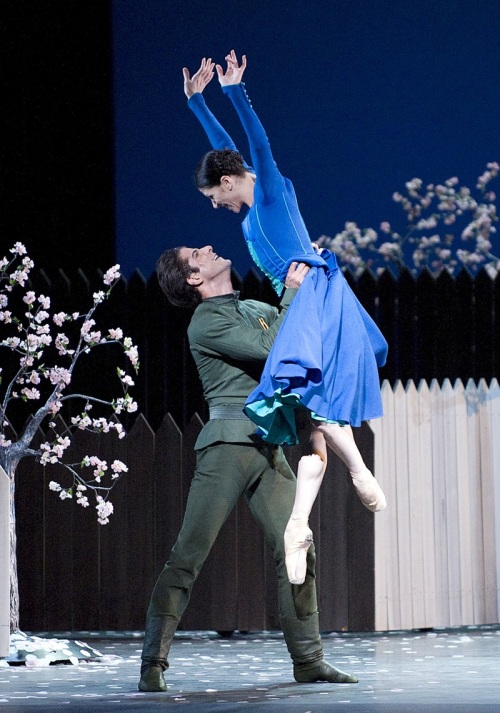
Paloma Herrera as Olga and Marcelo Gomes as Sergei in Ratmansky's On The Dnieper. Photo: Gene Schiavone / ABT ©
Videos
The following short extracts should give you an idea of how rich and varied Ratmansky’s choreography is and how widespread it has become.
- Extract of Russian Seasons as danced by Dutch National Ballet [link]
- Pas de deux from Anna Karenina, danced by Gitte Lindstrøm and Mads Blangstrup from The Royal Danish Ballet [link]
- Nina Ananiashvili in Leah, from Ratmansky Gala at the Bolshoi [link]
- Le Jardin Anime scene from Ratmansky’s Le Corsaire, with Svetlana Zakharova as Medora and Ekaterina Krysanova as Gulnare [link]
- Extract of Bolt, featuring Denis Savin, Anastasia Yatsenko and Andrei Merkuriev [link]
- Diana Vishneva and Andrei Merkuriev in Cinderella [link]
- A short feature on Scuola di Ballo for The Australian Ballet [link]
- Alina Somova and Vladimir Shklyarov in an extract of The Little Humpbacked Horse [link]
Extracts of Reviews and Selected Praise
Of The Bright Stream:
The final offering of the season was The Bright Stream. In 1935, when Shostakovich’s sunny score was staged in Moscow with choreography by Fyodor Lopukhov (and initially much liked), it drew down Stalinist wrath as “balletic fraud”, wholly irresponsible in portraying the nature of collective farming. It has been Alexey Ratmansky’s achievement to rehabilitate the piece, by rescuing the score and taking an amused look at its narrative and, most significantly, at the aesthetic and political conventions of ballet in the 1930s. Clement Crisp at the Financial Times (2007) [link]
Alexei Ratmansky, who completely rechoreographed it for the Bolshoi in 2003, didn’t have to worry about toeing the party line and was free to do whatever he wanted with Shostakovich’s jolly music and Piotrovsky and Lopukhov’s lighthearted libretto. His new production honours them both with wit and compassion, and a stream of wonderful — and very funny — choreography…All in all, the best new ballet to come out of Russia in years. Debra Craine at the Times (2006) [link]
Of Bolt:
Though I hope other choreographers will give sharper visual style to this unusual and instantly appealing music, I feel that Ratmansky deserves the highest credit here. He may not have produced a definitive new Bolt, but he has given the full ballet score to the world to play with, a marvellous gift. Ismene Brown at The Telegraph (2005) [link]
Of The Little Humpbacked Horse
This ballet is life-affirming and rich in humanity. Ratmansky’s choreography is masterly, and has a clear form and shape. His narrative is clear, and each scene is of the right length. The final transformation scene of Ivan into a young tsar is effective and witty. The two classical duets are full of heart-warming tenderness. The duets for Ivan and the Humpbacked Horse in Act I are spirited and lively. Kevin NG at The Saint Petersburg Times (2009) [link]
Of On the Dnieper:
Ratmansky, as always, produces lovely movement—the solos for both men are particularly telling. And he never loses his touch with groups of dancers, their extended passages both coherent and effective in themselves and reflecting the emotional trajectory of the story. Robert Gottlieb at The New York Observer (2009) [link]
Mr. Ratmansky gleans every bit of story possible from the Lifar-Prokofiev original and makes the most of it. (…) What Mr. Ratmansky captures beautifully with these characters (and less eloquently with Natalia, described in the program as “grief-stricken yet noble”) is what it is like to be torn by opposite emotional impulses. The choreography’s other felicities include some lovely subtleties of ensemble and striking instances of dancers standing or moving with their backs to us. Alastair Macaulay at The New York Times (2009) [link]
Of Russian Seasons
His “Russian Seasons” finally received its world premiere on Thursday evening at the New York State Theater, and it was worth the wait (…) It would be too easy to say that the choreography owes its originality to its inspirations from folk dance, though it does make happy use of such dancing. Mr. Ratmansky is a fountain of movement ideas, with sweeping stiff arms and vigorous floor-stamping and clapping and every sort of catlike pose, from freshly funny to deeply tragic. Intimations of character and personality never get in the way of pure dance. John Rockwell at The New York Times (2006) [link]
Leaving the theater, I could have danced for joy, especially if I had been choreographed by Ratmansky. A new choreographer has come to light – and the dance world is a better place. Clive Barnes at The New York Post (2006).
Of Concerto DSCH
Concerto DSCH is an endlessly suspenseful choreographic construction, with passages of breathtaking dance brilliance. Again and again, you find yourself thinking, “I didn’t realize this was going to happen after that,” and “What exactly were those steps that flashed by just now?” Better yet, it’s marked by tender pure-dance poetry. Alastair Macaulay at The New York Times (2008) [link]
Certainly “Concerto DSCH” seems at first glance – even second glance – a weird name for a ballet, but Alexei Ratmansky’s new work created for New York City Ballet on Thursday night is a gold-plated, copper-bottomed hit. Clive Barnes at The New York Post (2008) [link]
Sources and Further Information
- Alexei Ratmansky’s Biography from the Bolshoi’s Website [link]
- Alexei Ratmansky’s Biography from the Benois de la Danse Website [link]
- ABT’s Alexei the Mild? by Robert Greskovic. The Wall Street Journal. June 2009 [link]
- Interview with Alexei Ratmansky by Natasha Dissanayake. Ballet.co Magazine. July-August 2004. [link]
- Freelance Freedoms. Alexei Ratmansky in conversation with Marc Haegeman. Dance Now Magazine. Vol. 17, No. 4. Winter 2008/09.
- Ballet’s future Russian Ahead by Leigh Witchel. New York Post. October 2009. [link]
- Ratmansky Takes Manhattan by Marina Harss. The Nation. September, 2009. [link]
- Bolshoi Director May Take Job at City Ballet by Gia Kourlas. The New York Times. February 2008 [link]
- For Bolshoi Ballet, Two Steps Forward, One Step Back by Nora Fitzgerald. The Washington Post. February, 2007 [link]
- Alexei Ratmansky and the new Bolshoi by Margaret Willis. Dance Magazine, November 2004. [link]
- New Home, New Job and New Moves for Alexei Ratmansky by Roslyn Sulcas. The New York Times, May 2009. [link]
- The Bolshoi in Paris: An interview with Alexei Ratmansky by Patricia Boccadoro. Culturekiosque, February 2004. [link]
- Alexei Ratmansky by Roslyn Sulcas. The New York Times. November, 2009 [link]
